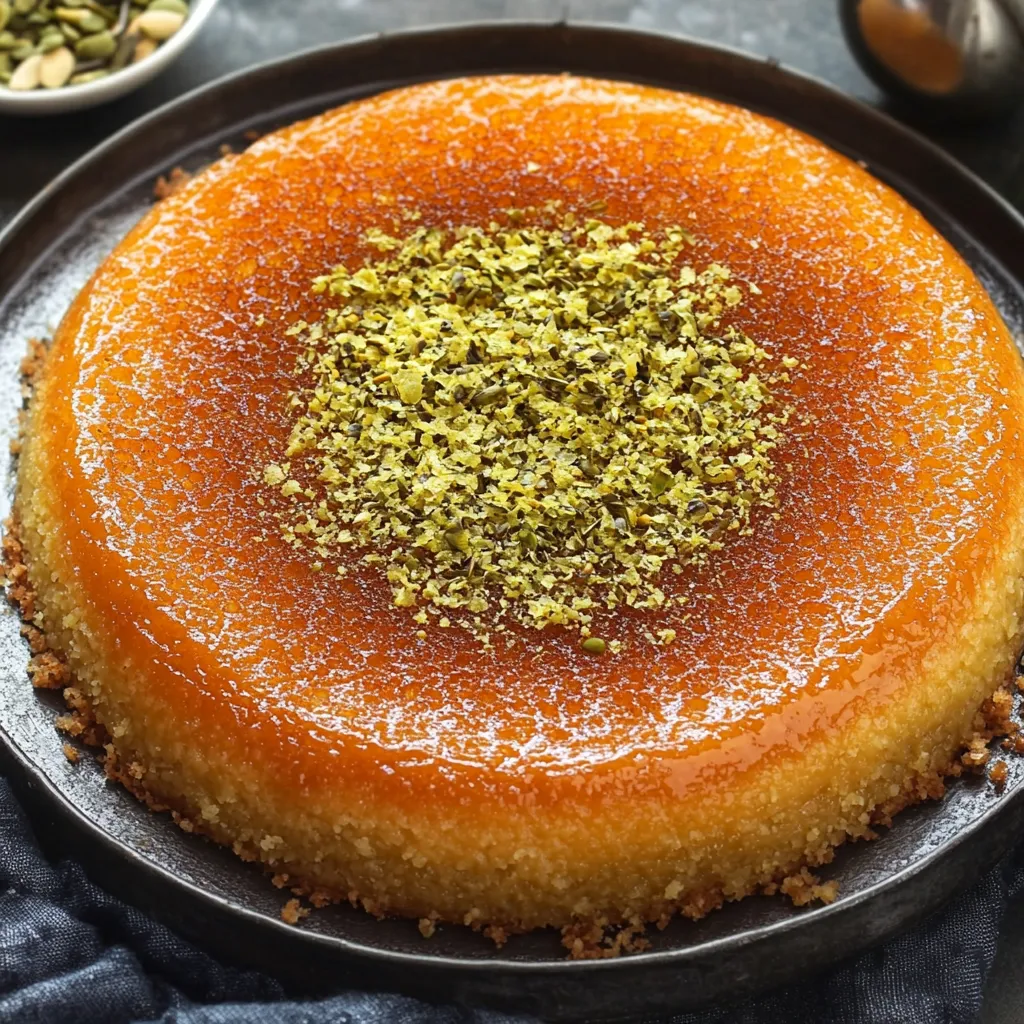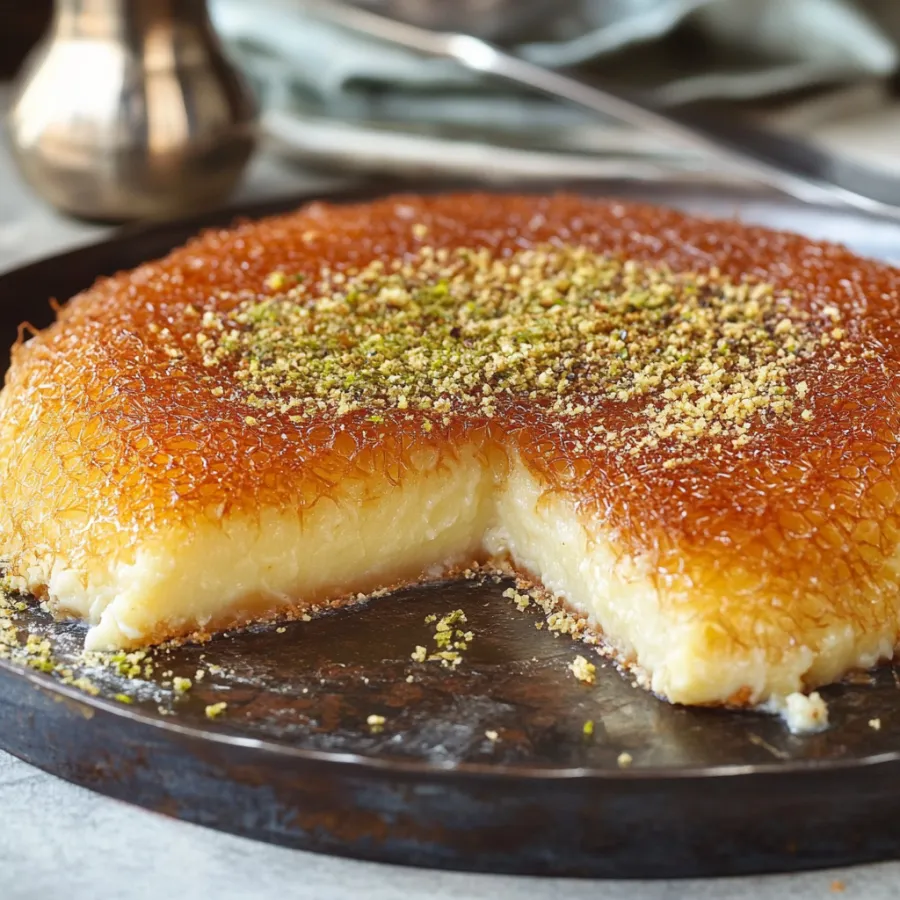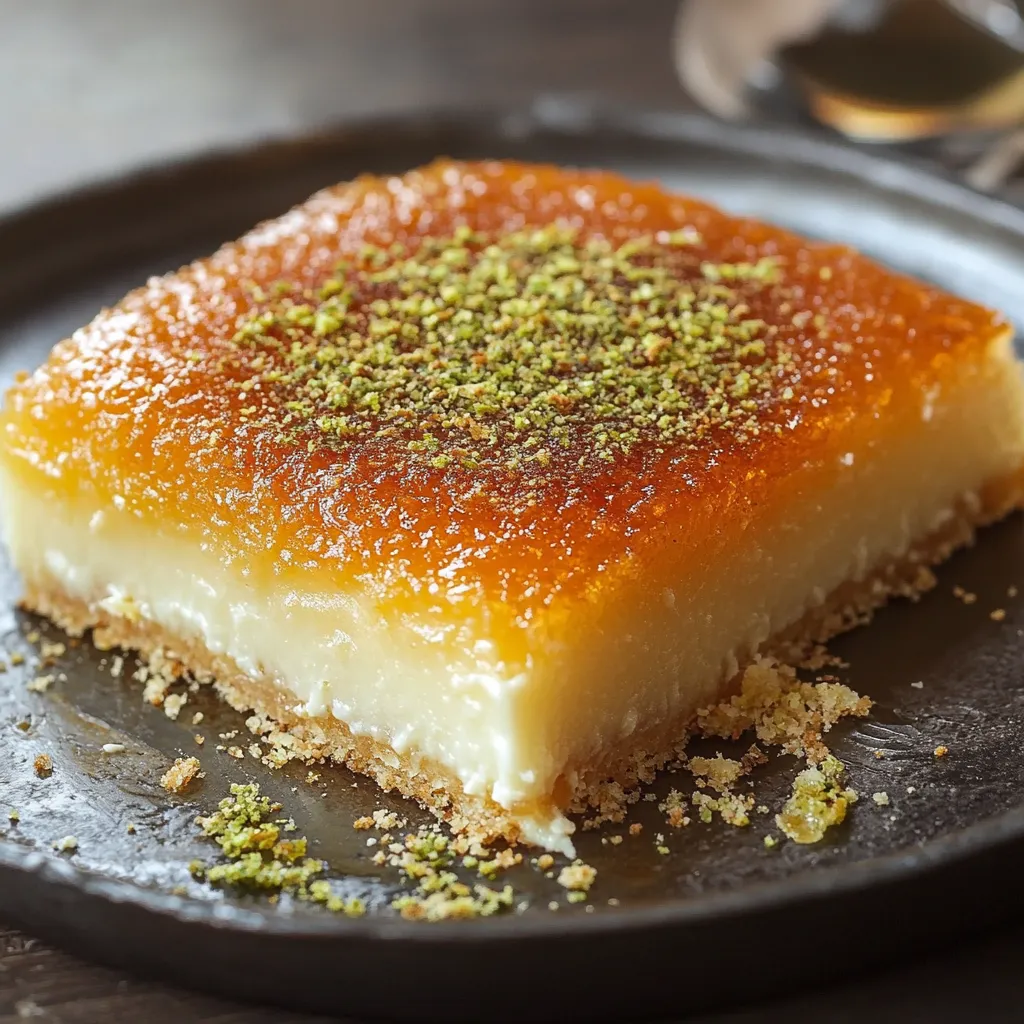 Pin it
Pin it
Dig into this classic Middle Eastern sweet—crunchy kataifi layers outside and creamy, gooey cheese inside. It gets an awesome soak in rosewater syrup, pulling together crispy and soft bites with a floral kick. Every forkful is buttery and sweet, with pistachios sprinkled on top for color and crunch. People love serving this showstopper during big parties and family get-togethers all through the Levant area.
I first tried knafeh when my Lebanese buddy's grandma whipped it up right there on the table. Watching her flip that hot golden pastry onto a plate and pour syrup all over was unforgettable. Tasting that crackling crust and melty middle helped me get why it means so much in their food culture.
Unforgettable Middle Eastern Ingredients
- Clarified butter: Gives the pastry crunch without burning. Find it in Middle Eastern shops or make your own.
- Rose water: Authentic rose water brings in the signature floral scent and taste for knafeh.
- Sweet cheese: Nabulsi or Akkawi are traditional faves, but mixing ricotta and mozzarella works too.
- Kataifi pastry: You get those extra crispy layers thanks to these fine pastry threads, usually in the freezer at specialty stores.
Irresistible Knafeh Guide
- Bake and Finish:
- Cook at 375°F for about 45 minutes until it's golden and crispy. Flip it onto a big plate, then pour the syrup while it's hot and toss pistachios on top.
- Layer Everything:
- Start with half the buttered kataifi in a greased dish, add cheese all over, then cover with the rest of the kataifi mix.
- Ready the Pastry:
- Let kataifi thaw, snip it up, and toss with lots of melted butter so every bit gets coated.
- Make the Syrup:
- Stir sugar and water till smooth, let it simmer for five minutes, add lemon and rose water, then let it cool completely before using.
 Pin it
Pin it
Messing up my first batch showed me how important it is to butter every bit of kataifi. My Lebanese neighbor told me to really work the butter in, strand by strand—totally changed the game, making sure each bite was super crispy with gooey cheese inside.
Fun Ways to Serve
Bring it out hot and let everyone ladle extra syrup if they want. Make it fancy by cutting diamonds and topping with pistachios and edible rose petals. Try putting fresh figs, dates, and cups of mint tea around the platter for those big family feasts.
Twists From Different Places
If you have Lebanese knafeh nabulsieh, it might have creamy semolina instead of cheese. Turkish künefe is often served in mini pans so it stays warm longer. In Nablus, Palestine, they use a special brined white cheese and amp up the cheese to pastry ratio.
How To Store
It's best right away if you love it crispy. Fridge leftovers loosely under foil and they'll keep for three days. Heat them in the oven at 300°F for 15 minutes to get that crust back—skip the microwave. If you want to get ahead, freeze it unbaked. Bake straight from the freezer, just add about 15 extra minutes.
 Pin it
Pin it
Knafeh became more than dessert for me—it was my link to family memories. The first time I baked it for my grandma, just the smell of rosewater and butter made her tear up. Making knafeh reminded me that these dishes carry our stories, and baking is just as special as eating it.
Frequently Asked Questions
- → Which cheese should I pick for Knafeh?
- You’ll usually see Nabulsi or Akkawi cheeses, both common in Middle Eastern baking and sweet in flavor. Can’t find those? Try fresh mozzarella (dry it well first) or a mix of soft ricotta and mozzarella, which works great too.
- → Where should I look for kataifi—this shredded dough?
- Head to a Mediterranean or Middle Eastern market, the international section at bigger supermarkets, or a specialty food shop—look for it in the freezer and thaw it before using.
- → Can I prep Knafeh early?
- It's definitely best eaten right after baking while it's warm and crisp. But you can do the syrup and buttered dough a bit beforehand. Just wait to put it all together and bake until you’re ready to share.
- → Why does my Knafeh fall apart after flipping?
- This is usually because the dough wasn’t packed down enough or there wasn’t enough butter. Try pressing the dough down with your hands so it’s snug and pour on enough melted butter to coat all those fine pieces.
- → Why do people use food coloring here?
- Adding that orange or gold color is just for looks—it gives Knafeh a signature vibrant vibe, but it doesn’t change how it tastes so skip it if you want.
